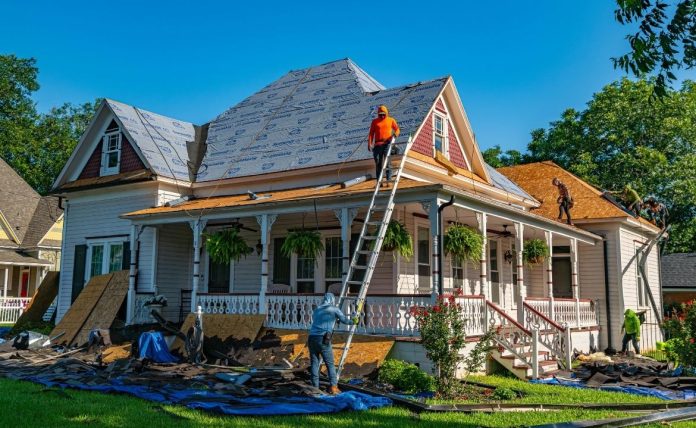When your home’s siding gets damaged, it’s normal to wonder if you need to replace everything or if you can fix just the problem spots. The good news is that in many cases, you can replace only the damaged areas and it can save you both time and money. Whether you’re dealing with storm damage, cracks, or faded panels, understanding when a partial repair makes sense is important. If you’re considering Columbia City siding repairs, here are five key factors that determine whether you can replace just a few pieces of siding.
1. Age and Availability of Your Siding
The age of your siding is one of the biggest factors in deciding if a partial repair is possible. Newer siding systems are easier to match because manufacturers still make the same colors and styles. However, if your siding is older, finding a perfect match can be tricky. Over the years, manufacturers have stopped producing certain colors or textures, which means your repaired section could look different from the rest of your home.
If you can’t find an exact match, it may make more sense to replace a larger section of your siding so everything blends evenly and your home keeps a consistent look.
2. The Extent of the Damage
How much of your siding is damaged matters just as much as how old it is. If the issue is limited to a small area, such as a few panels hit by hail or cracked from debris, spot replacement can be an easy fix. But if the damage spreads across several walls or sections, partial repairs might not be cost-effective.
It’s also important to look closely at the cause of the problem. For example, water or pest damage can spread behind the siding, even if it looks minor on the surface. In those cases, a full inspection will help determine whether a full replacement is a better long-term solution.
3. Matching Color and Texture
One of the hardest parts of repairing siding is getting new pieces to blend seamlessly with the old ones. Over time, sunlight and weather can fade your siding’s original color. Even if you find the same brand and style, the new pieces might look slightly different.
Some homeowners decide to replace an entire wall or side of their home to keep things uniform. While this costs a bit more upfront, it ensures your home looks balanced and polished instead of patchy.
4. Installation and Accessibility
Not all siding is installed the same way. Vinyl, wood, and fiber cement each have their own fastening systems, and some are easier to repair than others. For instance, vinyl siding panels interlock, so you can often remove and replace one without disturbing the others. But materials like fiber cement or metal may require removing multiple panels to reach the damaged one.
If the damage is located high up or around windows and corners, repairs may take more time and specialized tools. Professional installers have the right experience and equipment to handle these areas safely and correctly.
5. The Condition Underneath
Before replacing any siding, it’s important to check what’s underneath. Damaged siding can sometimes hide bigger issues like moisture damage, mold, or rotted sheathing. Simply swapping out panels without fixing what’s beneath them can lead to more problems later.
A professional inspection can reveal whether your wall structure is sound. If the underlying materials are in good shape, you can go ahead with a partial repair. But if there’s deeper damage, a full replacement may be the better choice to protect your home in the long run.
Final Thoughts
You don’t always have to replace all of your siding to keep your home protected and looking great. In many cases, replacing just a few pieces is enough as long as the materials can match and the underlying structure is solid.
If you’re noticing cracks, warping, or fading, it’s best to get an expert opinion before making a decision. A quick inspection can help determine whether a small repair will do the job or if your home would benefit from a more complete siding update. With the right approach, your home can stay beautiful, protected, and energy-efficient for years to come.








